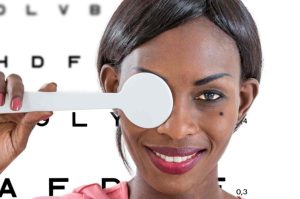Telehealth is the use of technology to deliver healthcare services remotely, such as through video calls, mobile apps, or online platforms. Telehealth has the potential to improve access, quality, and affordability of eye care services in Nigeria, a country that faces many challenges in providing adequate eye care to its population. According to the World Health Organization, Nigeria has an estimated 4.25 million people who are visually impaired, and 0.5 million who are blind. The main causes of visual impairment and blindness are cataracts, glaucoma, trachoma, and refractive errors. However, many of these conditions are preventable or treatable if detected early and managed properly.
This essay will explore the role of telehealth in eye care services in Nigeria, focusing on the benefits, challenges, and opportunities of this innovative approach. It will also examine some of the telehealth platforms and initiatives that are currently operating or emerging in the Nigerian eye care sector, such as Mobihealth, iWello, CribMD, and DRO Health. The essay will argue that telehealth can be a powerful tool to enhance eye care delivery and outcomes in Nigeria, especially for rural and underserved communities, but it also requires adequate infrastructure, regulation, and collaboration to ensure its effectiveness and sustainability.

The Importance of Telehealth in Improving Eye Care Access in Nigeria
Telehealth plays a crucial role in improving access to eye care services in Nigeria, especially for individuals residing in remote areas. This innovative approach to healthcare delivery allows people to access eye care services without the need to travel long distances, overcoming geographic barriers and reducing transportation costs.
In Nigeria, many underserved populations face challenges in accessing eye care due to the limited availability of healthcare facilities and specialists in their local communities. Telehealth eliminates these barriers by connecting patients with eye care specialists through virtual platforms. This remote access to eye care services ensures that individuals in remote areas can receive the necessary care, diagnosis, and treatment, without the need to physically visit urban areas.
Furthermore, telehealth enables eye care providers to bring their expertise directly to individuals who may not have easy access to specialized eye care in their communities. By leveraging telehealth technology, eye care specialists can remotely diagnose and treat eye conditions, monitor chronic eye conditions, and provide necessary guidance and support. This improves the overall quality of eye care for underserved populations in Nigeria.
Overall, telehealth is a game-changer in eye care services in Nigeria, as it breaks down barriers and provides a convenient, accessible, and efficient way for individuals to receive the eye care they need, regardless of their location.

Advantages of Telehealth in Providing Eye Care Services to Remote Areas
Telehealth enables remote diagnosis and treatment of eye conditions, reducing the need for patients to travel to urban areas for specialized care.
With telehealth, eye care specialists can remotely monitor and manage chronic eye conditions of patients in remote areas, improving their overall quality of life.
By using telehealth technology, eye care providers can reach individuals in remote areas with limited access to transportation and healthcare facilities.
Telehealth: A Solution for Overcoming Limited Eye Care Specialists in Nigeria
Telehealth allows patients in Nigeria to connect with eye care specialists from anywhere, reducing the reliance on a limited number of specialists in urban areas.
Through telehealth, eye care providers in Nigeria can tap into a global network of specialists, enabling them to provide a wider range of specialized care.
Telehealth platforms facilitate knowledge-sharing among eye care specialists, promoting collaboration and improving the quality of care in Nigeria.

The Future of Eye Care: Exploring Telehealth Technology in Nigeria
Telehealth technology has the potential to revolutionize eye care in Nigeria, improving accessibility, efficiency, and outcomes. With advancements in telehealth technology, such as remote monitoring and teleconsultations, the delivery of eye care services can be greatly enhanced.
The integration of telehealth into the existing eye care system in Nigeria can lead to significant benefits, including cost savings, improved patient outcomes, and better resource allocation. By leveraging telehealth technology, eye care providers can streamline the delivery of services, reducing waiting times and optimizing appointment scheduling.
Furthermore, telehealth enables eye care providers to easily access and share patient information, leading to more informed diagnoses and treatment plans. This seamless exchange of information enhances the overall quality of care provided.
Additionally, telehealth offers opportunities for remote education and training for eye care providers in Nigeria. Through virtual platforms, they can enhance their skills and knowledge, keeping up with the latest advancements in the field.
In summary, telehealth technology holds great promise for the future of eye care in Nigeria. Its integration can lead to improved accessibility, efficiency, and quality in service delivery, ultimately benefiting the population’s overall eye health.

Telehealth: Enhancing Efficiency and Quality in Eye Care Services
Telehealth plays a crucial role in enhancing the efficiency and quality of eye care services in Nigeria. By leveraging telehealth technology, eye care providers can optimize the delivery of services, resulting in improved patient experiences and outcomes.
One of the key advantages of telehealth in eye care is its ability to streamline the delivery of services. With telehealth, waiting times can be reduced as appointments can be scheduled more efficiently. Patients no longer have to spend hours in crowded waiting rooms, increasing their overall satisfaction.
Additionally, telehealth enables eye care providers to easily access and share patient information. By having a comprehensive view of a patient’s medical history and test results, eye care specialists can make more informed diagnoses and develop personalized treatment plans. This level of information sharing leads to better patient outcomes.
Telehealth also opens up opportunities for remote education and training for eye care providers. Through virtual platforms, specialists can participate in webinars, conferences, and online courses to enhance their skills and knowledge. This continual education ensures that eye care providers stay up-to-date with the latest advancements in the field, ultimately benefiting their patients.
In summary, telehealth enhances efficiency in eye care services by optimizing appointment scheduling, facilitating information sharing, and providing opportunities for remote education. By embracing telehealth, eye care providers in Nigeria can improve the overall quality of care and enhance patient outcomes.

The Growing Demand for Telehealth in Eye Care Services in Nigeria
The COVID-19 pandemic has accelerated the adoption of telehealth in eye care, as it provides a safe and convenient way to receive care. Telehealth allows patients to seek eye care services without the need for physical contact, reducing the risk of virus transmission.
The convenience of telehealth has led to an increased demand for remote eye care services, as patients appreciate the flexibility it offers. People can now easily access eye care services from the comfort of their own homes, eliminating the need for commuting and reducing waiting times.
Additionally, telehealth has shown to be particularly effective in addressing the unique challenges faced by individuals in remote areas of Nigeria. The lack of access to eye care specialists and healthcare facilities is a common issue in rural and underserved communities. Telehealth bridges this gap by allowing individuals in remote locations to receive timely eye care services without having to travel long distances.
Furthermore, the growing demand for telehealth in eye care services in Nigeria goes beyond the current pandemic. Even after the pandemic subsides, telehealth is projected to continue playing a significant role in improving eye care access and delivery. The convenience and cost-saving benefits of telehealth have resonated with patients, and they have come to appreciate the flexibility it offers to fit within their busy lives.
Overall, the growing demand for telehealth in eye care services in Nigeria highlights the need for a more accessible and efficient healthcare system. Telehealth has the potential to address the healthcare challenges faced by individuals in both urban and rural areas, promoting healthcare equity and improving the overall population health in Nigeria.

Telehealth: Bridging the Gap between Urban and Rural Eye Care in Nigeria
Telehealth plays a significant role in bridging the geographical divide between urban and rural areas in Nigeria, ensuring that individuals in remote locations have access to timely eye care services.
Through telehealth, urban eye care specialists can collaborate with healthcare providers in rural areas, extending their expertise to underserved communities. This collaboration enables patients in remote areas to receive specialized eye care without the need to travel long distances.
By leveraging telehealth technology, eye care providers can bridge the gap in access to eye care services between urban and rural areas. This helps to promote healthcare equity and improve the overall population health in Nigeria.

Conclusion
Telehealth has a significant role to play in improving eye care services in Nigeria. It allows individuals in remote areas to access eye care without the need to travel long distances, eliminating barriers like transportation costs and time constraints. Through telehealth, eye care services can reach underserved populations who may not have easy access to eye care specialists in their local communities.
The advantages of telehealth in providing eye care to remote areas are numerous. It enables remote diagnosis and treatment of eye conditions, reducing the need for patients to travel to urban areas for specialized care. Eye care specialists can remotely monitor and manage chronic conditions, improving patients’ quality of life. Additionally, telehealth technology helps reach individuals in remote areas with limited access to transportation and healthcare facilities.
Telehealth also provides a solution for the limited number of eye care specialists in Nigeria. Patients can connect with specialists from anywhere, reducing reliance on a small number of specialists in urban areas. The telehealth platform facilitates knowledge-sharing and collaboration among specialists, improving the overall quality of care.
The future of eye care in Nigeria lies in telehealth technology. Advancements such as remote monitoring and teleconsultations can greatly enhance the delivery of eye care services, leading to better accessibility, efficiency, and outcomes. Integrating telehealth into the existing eye care system can result in cost savings, improved patient outcomes, and better resource allocation.
Telehealth enhances efficiency and quality in eye care services by reducing waiting times, optimizing appointment scheduling, and facilitating the sharing of patient information. It also enables remote education and training for eye care providers, enhancing their skills and knowledge.
The COVID-19 pandemic has further accelerated the adoption of telehealth in eye care due to its safe and convenient nature. The demand for remote eye care services is increasing as patients appreciate the flexibility it offers and the reduced risk of virus transmission.
Telehealth plays a crucial role in bridging the gap between urban and rural eye care. It ensures timely access to eye care services for individuals in remote locations and enables collaboration between urban specialists and healthcare providers in rural areas. By reducing inequities in access, telehealth promotes healthcare equity and improves overall population health.





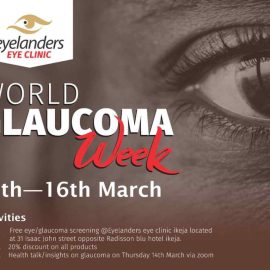



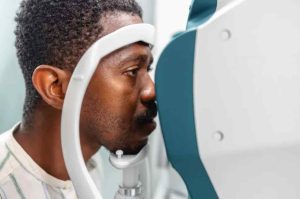



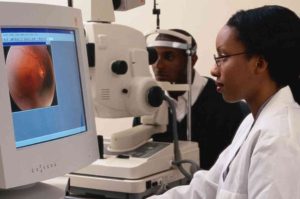

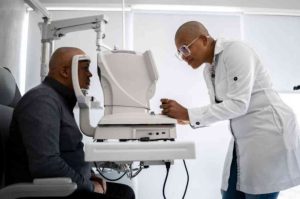

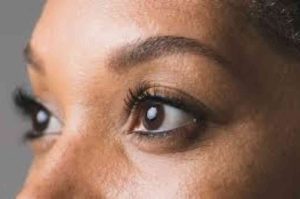


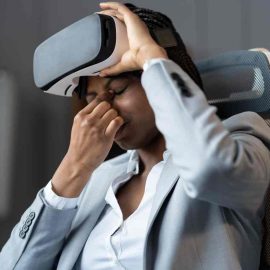






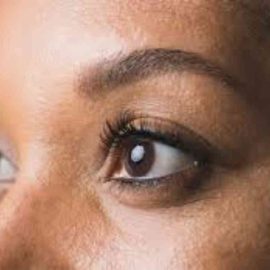













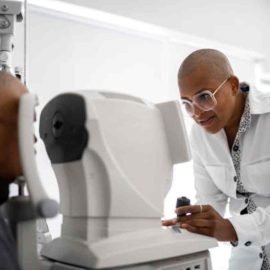
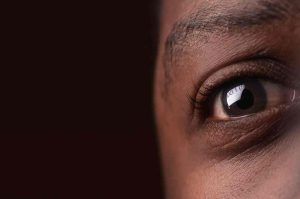 IK
IK